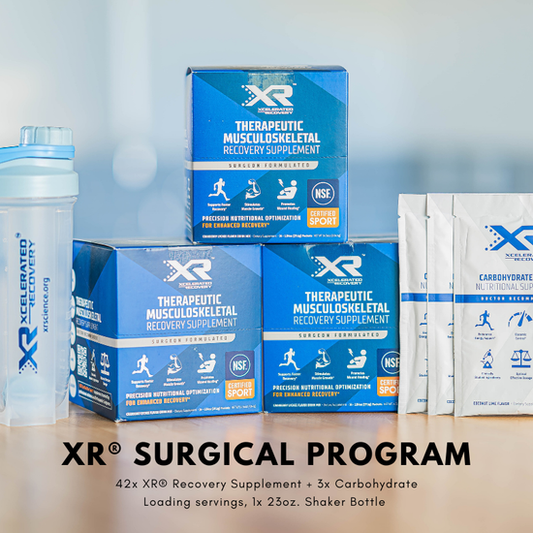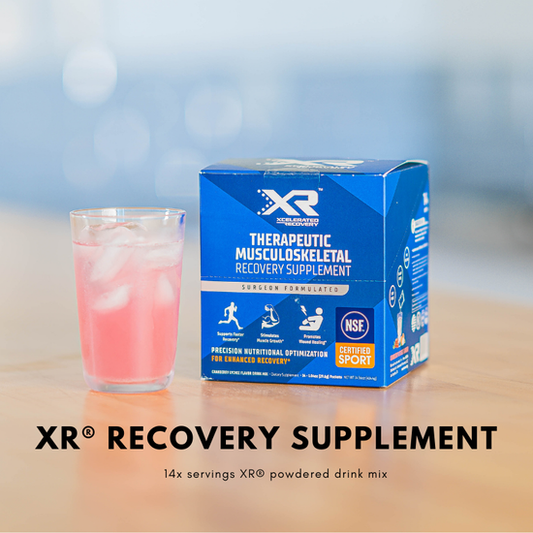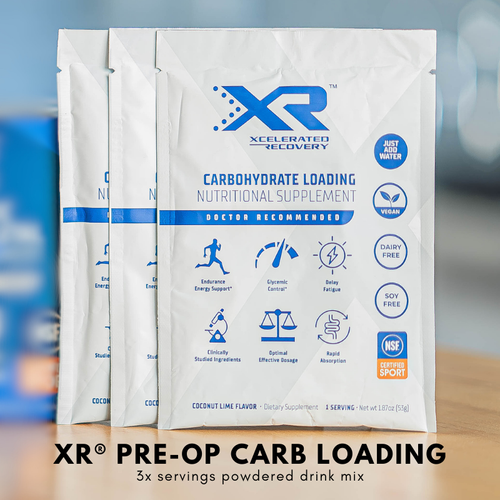
What Are Amino Acids? Unlocking Their Role in Recovery
Share
What Are Amino Acids?
Amino acids are organic compounds that combine to form proteins. Think of them as the individual letters that come together to form sentences (proteins) in the language of life. Each amino acid contains a central carbon atom, an amino group, a carboxyl group, a hydrogen atom, and a distinctive side chain. It's this side chain that determines the characteristics and functions of the amino acid.
The Twenty Standard Amino Acids
The human body utilizes just 20 standard amino acids to construct over 100,000 proteins depending on the combination and sequence used. All living bodies contain the same 20 types of amino acids. While each is unique, they collectively form thousands of different proteins, each with specific roles. These proteins are involved in almost all cellular functions and processes, including:
- Building and repairing tissues
- Forming enzymes and hormones
- Providing energy when needed
- Supporting immune function
- Contributing to neurotransmission
Amino acids make up about 20% of our bodies or about 50% of our solid body mass; they are the next largest component in our bodies after water. The body of a person who weighs 175 lbs has about 35 lbs of amino acids in their body make up.

Essential vs. Non-Essential Amino Acids
Of the 20 amino acids, nine are considered essential (also called indispensable). These cannot be made by the body and must be obtained from our diet:
- Histidine
- Isoleucine
- Leucine
- Lysine
- Methionine
- Phenylalanine
- Threonine
- Tryptophan
- Valine
The remaining 11 are termed non-essential, as your body can synthesize them from other molecules under normal conditions. However, certain conditions like illness or stress can make some non-essential amino acids conditionally essential.

Role of Amino Acids in Human Health
Amino acids are not just building blocks for proteins but also critical players in many physiological processes:
- Tissue Growth and Repair: They are vital in building muscle, connective tissue, and skin.
- Enzyme Production: Many enzymes are proteins made up of specific sequences of amino acids.
- Hormone Synthesis: Hormones like insulin and growth hormone are composed of amino acids.
- Immune Function: Certain amino acids support the production of antibodies and immune system cells.
- Nutrient Transport and Storage: Some proteins transport or store nutrients, including amino acids themselves.
Understanding Protein Quality and Amino Acid Composition
The quality of dietary protein is often assessed by its amino acid composition and digestibility. A complete protein source contains all the essential amino acids in proportions suitable for human health. Animal-based foods like meat, fish, and dairy are complete proteins, whereas most plant-based proteins lack one or more essential amino acids. However, a well-planned vegetarian or vegan diet can combine different plant proteins to meet all amino acid requirements.
The Impact of Amino Acids on Metabolism and Health
Amino acids are not only building blocks but also precursors to neurotransmitters and hormones that regulate metabolism and bodily functions. For instance, tryptophan is a precursor to serotonin, a neurotransmitter associated with mood and sleep. Imbalances or deficiencies in certain amino acids can lead to health issues, underscoring the importance of a balanced and adequate intake.
Amino acids are a fascinating and vital aspect of biology, impacting nearly every function of our bodies. Understanding them is not just about knowing the basics of nutrition; it's about appreciating the intricacies of human life and health. As research continues to uncover more about these remarkable molecules, we're reminded of the complexity and the beauty of the biological world. Whether you're interested in health, nutrition, or the fundamental science of life, the study of amino acids offers valuable insights and a deeper appreciation for the body's incredible capabilities.
Let's dive deeper into the types of amino acids that compose the proteins vital for the human body's functioning.

- Essential Amino Acids
Of the 20 amino acids, nine are essential, meaning they must be obtained through the diet as the human body cannot produce them. These include:
- Histidine: Vital for growth and repair of tissues, and the production of both red and white blood cells. It's also important for maintaining the myelin sheath, a protective barrier surrounding your nerve cells.
- Isoleucine: Known for its role in muscle metabolism, it is heavily concentrated in muscle tissue. It's also important for immune function, hemoglobin production, and energy regulation.
- Leucine: Crucial for protein synthesis and muscle repair, it also helps regulate blood sugar levels, stimulates wound healing, and produces growth hormones.
- Lysine: Important for growth, tissue repair, and the production of hormones, enzymes, and antibodies. It also plays a key role in calcium absorption and maintaining the right nitrogen balance in the body.
- Methionine: Vital for detoxification, it contributes to the metabolism of fats and serves as a building block for other amino acids.
- Phenylalanine: A precursor for neurotransmitters such as dopamine, epinephrine, and norepinephrine, it plays an integral role in the structure and function of proteins and enzymes and the production of other amino acids.
- Threonine: Important for the formation of collagen and elastin, it also contributes to fat metabolism and immune function.
- Tryptophan: Known as a precursor for serotonin, a neurotransmitter that regulates appetite, sleep, mood, and pain.
- Valine: Stimulates muscle growth and regeneration and is involved in energy production.
- Non-Essential Amino Acids
Eleven amino acids are non-essential (or dispensable) , as they can be synthesized by the human body. These include:
- Alanine: Used to convert glucose into energy and eliminate excess toxins from the liver.
- Arginine: Important for immune system function, circulation, hormone secretion, ammonia detoxification, and the healing of wounds.
- Asparagine: Plays a pivotal role in the biosynthesis of glycoproteins and is necessary for nervous system function.
- Aspartic acid: Utilized in the citric acid cycle, it's involved in DNA metabolism and the transmission of nerve signals.
- Cysteine: Assists in the formation of collagen, promotes healthy skin and hair, and aids in detoxification.
- Glutamic acid: An important neurotransmitter that plays a vital role in the synthesis of proteins, the metabolism of sugars and fats, and the transportation of potassium into the spinal fluid.
- Glutamine: Plays a role in a variety of biochemical functions including protein synthesis, regulation of acid-base balance in the kidney, and as a fuel for cells lining the intestines.
- Glycine: Involved in the production of DNA, phospholipids, and collagen, and plays a key role in the repair of damaged tissues.
- Proline: Important for the production of collagen and cartilage, it also helps maintain and repair joints and tendons.
- Serine: Vital for the production of tryptophan, a precursor to serotonin, and contributes to the formation of cell membranes.
- Tyrosine: A precursor for the neurotransmitters dopamine, norepinephrine, and epinephrine, as well as for hormones such as thyroid hormones. It also influences skin pigment and plays a role in adrenal, thyroid, and pituitary function.
- Conditionally Essential Amino Acids
Under specific circumstances, such as illness, stress, or infancy, certain non-essential amino acids become conditionally essential. This means the body cannot produce an adequate amount, and they need to be obtained from the diet. These include:
- Arginine: Typically considered non-essential, it becomes conditionally essential during periods of rapid growth, severe stress, or recovery from injury.
- Cysteine: Required in larger amounts when the body is under stress or illness, as it's a precursor to the antioxidant glutathione.
- Tyrosine: Becomes essential if the intake of phenylalanine is inadequate or the body cannot convert phenylalanine to tyrosine, such as in the disorder phenylketonuria (PKU).
- Glutamine: The most abundant free amino acid in the body, it becomes conditionally essential during periods of physical stress like intensive athletic training or gastrointestinal disorders.
Each amino acid plays a unique role in the body's growth, repair, and function. A balanced diet that includes a variety of foods can generally provide all the amino acids required for health, but understanding their individual roles and when supplemental intake might be beneficial, can help guide dietary choices and support overall health and well-being.








